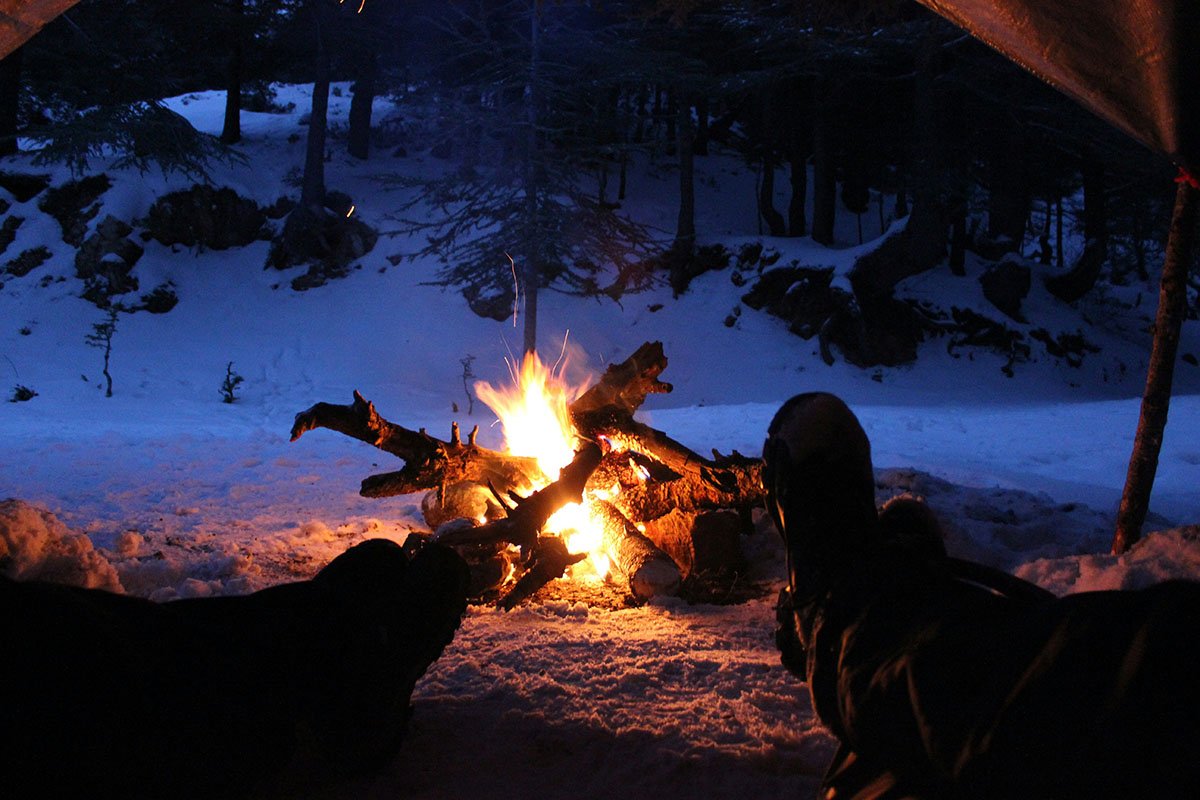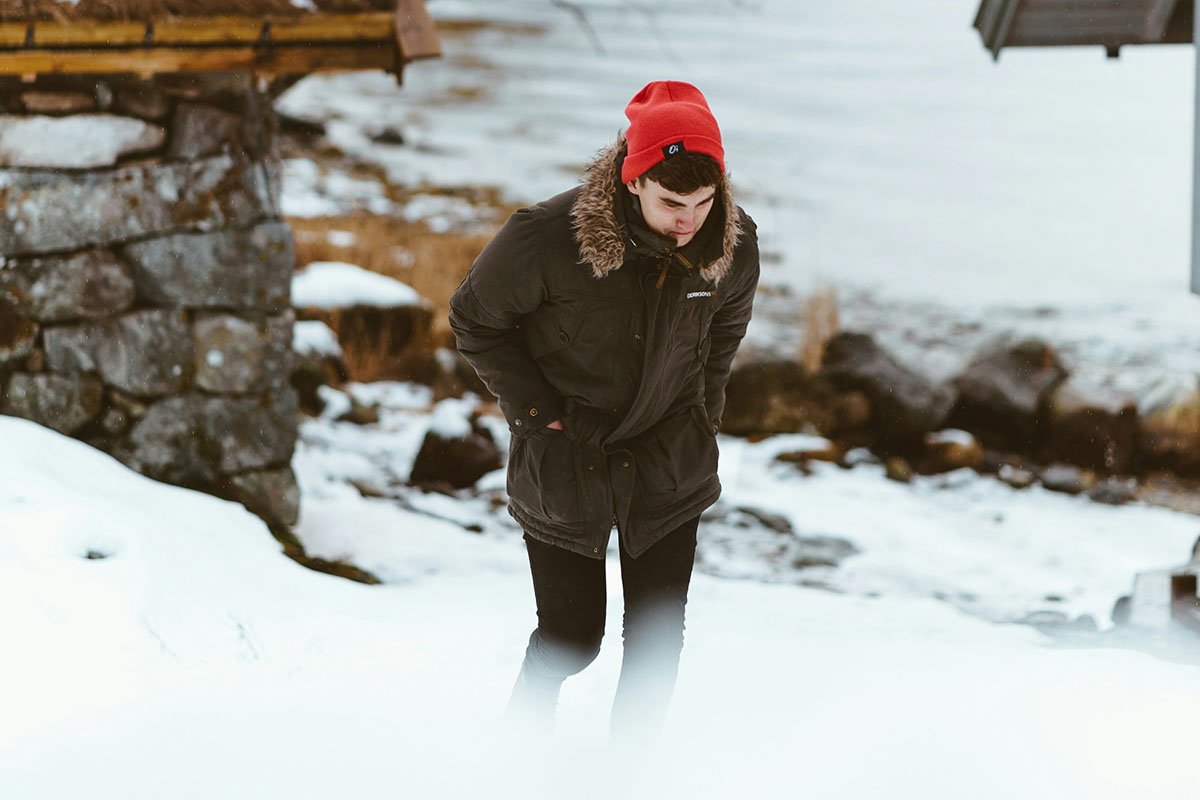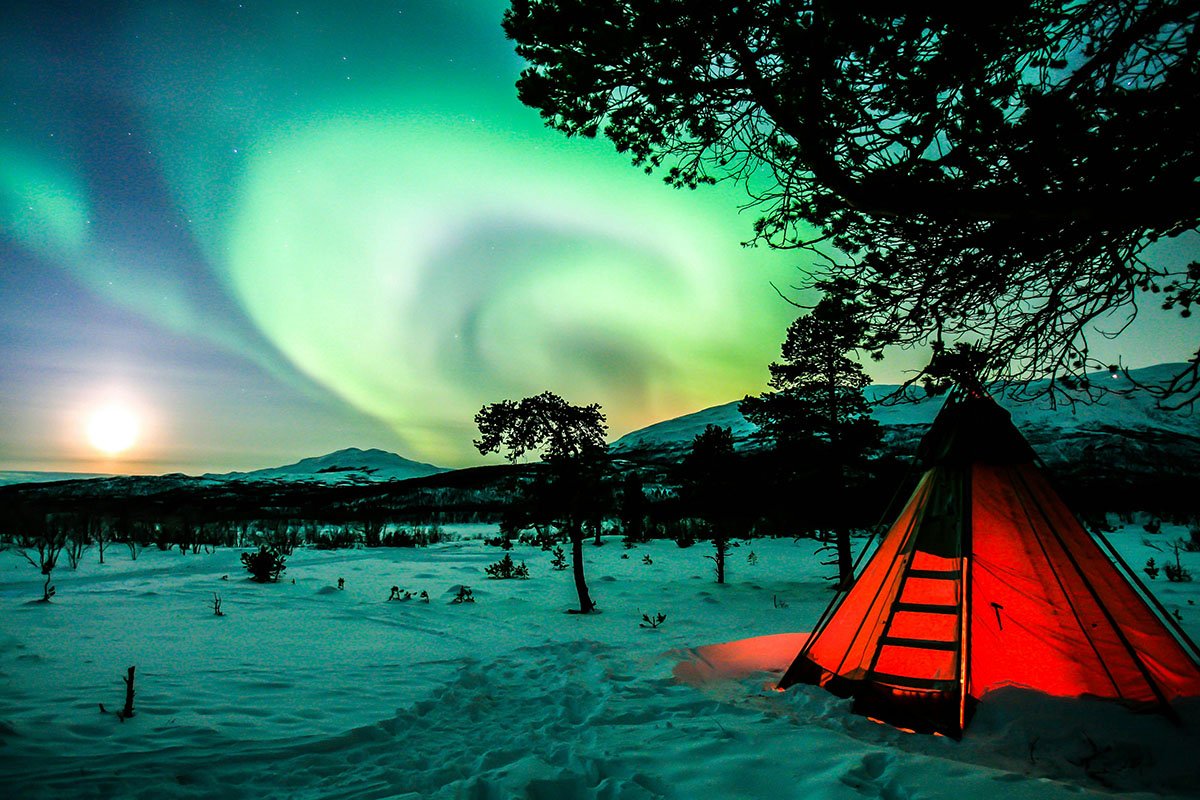You can camp in cold weather. Yes, you’re going to face cold temperatures. No, you might not stay warm the whole time. But if you have the right gear and a positive attitude, you can not only avoid being miserable but also have a lot of fun.
Planning a camping trip during the low season — or high season in desert areas — has its benefits. Fewer people venture out for winter camping (generally) than they do in the summer, which means areas that experience cold weather may be less busy.
A positive attitude will only get you so far, though, and even the most gung-ho campers are going to need some gear and know-how to stay warm—especially if you’re tent camping. Exposure to extreme temperatures can be dangerous.
If you’re wondering if you can heat a tent safely, the answer is yes. You can heat the inside of your tent using heaters and other methods that don’t require fuel or electric power. We’ll cover them all in this article, alongside some additional tips for insulating your tent, sleeping bag, and body against heat loss.
Note: The U.S. Consumer Product Safety Commission recommends never using a portable heater while sleeping in an enclosed space, such as a tent or an RV.
Recommended Way to Heat a Tent: Tent Heaters
The most straightforward way to heat a tent is a tent heater. Non-electric portable heaters require fuel, and options include everything from propane and butane-fueled heaters to a wood-burning stove. If you have access to an electric hookup or batteries, electric heaters are another popular option.
Always keep in mind that fuel-based heaters require adequate ventilation to avoid carbon monoxide poisoning.
Propane Heaters
Propane and butane tent heaters can be convenient, portable, and effective solutions when the temperature drops.
The best propane tent heaters have safety features built-in, like an auto-shutoff function in case a heater tips over and an oxygen depletion sensor (ODS) that disables the heater if oxygen levels in the surrounding environment become too low.
When looking to heat a tent on cold nights, a propane heater can be an excellent choice. Even small propane heaters can create enough warm air to take the chill off as you prepare to sleep.
Wood-Burning Stove
You can use a wood-burning stove to heat your tent, but you must adequately ventilate. Look for a wood stove option that is light and compact, that’s made from temperature-resistant materials like titanium, and that offers safety features like a spark arrestor.
A wood stove requires a chimney, so you should have a “hot tent” that’s chimney compatible for this to work. If you have a normal tent, we don’t recommend use a wood-burning solution to generate heat inside an enclosed space.
Electric Heaters
An electric tent heater doesn’t create carbon monoxide like gas heaters and wood stoves do, so it does not require ventilation. While an electric heater can turn a cold tent into a warm tent safely and efficiently, it does require electricity—and that’s sometimes tough when you’re on a camping trip.
To power an electric space heater, including convection or fan heaters and radiant heaters, you’ll need electric hookups or a power bank. If you’re relying on portable power to run your heater, don’t assume it’ll work.
Check the watt-hours of energy storage your power bank has and compare it to the heater’s wattage draw to be sure it’ll run for long enough to be effective—ideally without draining your power bank.
If you can make it work, an electric space heater is a fantastic way to safely heat your space and stay warm on a cold night.
Other Methods for Heating Your Tent

If you don’t have enough watt-hours to power an electric tent heater and don’t like the idea of a propane heater or a wood stove, don’t worry, there are other ways to heat a tent. Here are a handful of ideas and whether we recommend them or not.
Candle Lanterns (Not Recommended)
If you’re in a pinch, you can try to heat up the air in your tent by lighting a candle lantern.
Candle lanterns may boost the temperature of the air directly around (and particularly above) itself, but it won’t warm the entire tent. It certainly won’t protect you from the chilliness seeping through the tent floor from the cold ground.
Candle lanterns have an open flame and are therefore a fire hazard. If you use one, keep it up off the floor and away from the tent walls.
Candles also let off soot and smoke, which will get trapped in your tent, if you don’t let it out. A candle lantern will also need to cool for a while after being extinguished before it’s safe to put away.
Hot Rocks (Recommended)
Next time you’re cold-weather camping, you can take a page out of a survivalist’s book and use hot rocks to warm your tent. Find a handful of medium-sized stones (the number you need depends on the size of your tent) and place them in your campfire.
Use tongs to remove the hot stones from the fire and set each one on a folded-up blanket or towel to protect your tent’s flooring.
The hot rocks will radiate heat and can be enough to keep a small tent warm until the rocks lose their heat. This is a primitive way to add some extra warmth to your shelter, and it doesn’t require buying or transporting much extra camping gear.
Do not attempt this with porous rocks. Porous rocks may explode when put into a fire since they absorb water over time that will vaporize when put into an open flame.
Using a Campfire’s Heat (Recommended in Emergency Situations)
You can heat a tent by pitching it over a burned-out campfire and leveraging the residual heat coming off the hot coals.
To accomplish this, put out your campfire completely, bury the coals, and set your tent up on top after the ground has cooled to the point where it won’t burn you or the tent footprint. Staying warm is a lot easier when there’s no cold ground beneath you.
You can also build a fire reflector to leverage a campfire’s heat to warm you and your shelter. While a fire reflector isn’t the ideal way to heat a tent, it’s better than nothing on a cold night when temperatures turn dangerously cold.
How to Retain Heat and Stay Warm Inside Your Tent

Once you heat a tent, how do you keep heat inside? Your best bet, if you’re winter camping, is to have an insulated tent, like a four-season tent, which is designed to retain heat. Three-season tents, by comparison, are designed to be well-ventilated so that heat can easily escape.
You can try to create your own insulated tent by using thermal blankets to trap heat, but it’ll only work to a certain degree. More important is to try to preserve your body heat through layering.
Here are some additional strategies for staying warm while winter camping or camping in cold weather.
Additional Ways to Stay Warm Inside Your Tent
Layer Warm Clothes
Layering won’t heat a tent, but it will help you maximize your body heat when it’s cold, and that can go a long way. Layers should include:
- A moisture-wicking base layer
- An insulating layer
- A waterproof and windproof outer layer
Use Electric Blankets and Pads
A heated blanket is a great idea for staying warm on a camping trip. While it won’t produce warm air, you can place an electric heating pad beneath your sleeping bag, or you can sleep with an electric blanket on top of you to stay warm all night long.
To make an electric blanket or pad work, though, you’ll need a power source or a portable battery with enough juice.
Put Hot Water Bottles in Your Sleeping Bag
You can boil water on a campfire, pour it into a couple of heat-safe bottles, wrap the bottles in a shirt, cloth, or blanket, and throw them in your sleeping bag. The hot water bottle or bottles will radiate heat and make your sleeping bag warm before you get in.
Use a Sleeping Bag Liner
You can also make your sleeping space warmer by using a sleeping bag liner. The liner serves as an extra layer for holding warmth close to your body.
Precautions and Safety
Carbon monoxide poisoning is a risk when using gas heaters and wood stoves to heat your camping tent. Always give yourself proper ventilation, which could be as easy as unzipping part of your tent’s door or window.
Be aware of fire risks when trying to heat a tent. Using an open flame inside an enclosed space is inherently dangerous.
Never leave heating devices unattended or use them overnight. Follow manufacturers’ instructions and safety guidelines to prevent accidents.
Final Thoughts

Now that you know how to safely heat a tent, you’re ready to go camping, even in the cold. From portable heaters to hot water bottles, there are many ways to heat a tent and stay warm inside of it, but don’t forget the basics.
Prioritize layering warm clothes to keep in your body heat, and make sure you have the appropriate camping tent for the weather.





